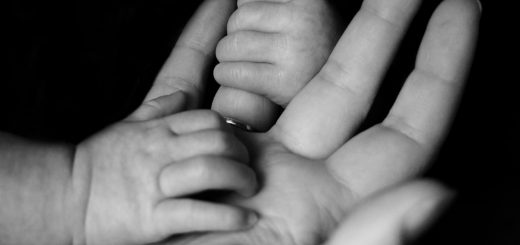Pratten v. British Columbia (Attorney General): B.C. Supreme Court Declares Sperm Donor Anonymity Unconstitutional
Justice Elaine Adair, for the Supreme Court of British Columbia in Pratten v. British Columbia (Attorney General), 2011 BCSC 656, has struck down provincial legislation that protects sperm donor anonymity. More specifically, it was held that certain provisions of B.C.’s Adoption Act and Adoption Regulation unjustifiably violated section 15 of the Canadian Charter of Rights and Freedoms. “Based on the whole of the evidence,” Adair writes, “assisted reproduction using an anonymous gamete donor is harmful to the child, and it is not in the best interests of donor offspring.” At its core, the decision rests on the Province having recognized – and, to a certain extent, addressed – the needs of adoptees, but not the needs of donor offspring. The Province will have 15 months to revise its legislative scheme. In the meantime, a permanent injunction has been granted to prohibit the destruction or disposal of gamete donor records.
The story begins in 1981, when the Plaintiff, Mrs. Olivia Pratten, was conceived using the sperm of an anonymous donor. The insemination procedure was administered by Dr. Gerald Korn. In 2001, a 19-year-old Pratten approached Dr. Korn seeking more information about her biological father. According to the rules of the College of Physicians and Surgeons of British Columbia, however, Dr. Korn was not obliged to maintain donor records for more than six years. As such, the information Pratten sought had long since been destroyed. Thus emerged Pratten’s fundamental complaint: by permitting such destruction, the Province of B.C. has deprived her of basic personal information essential to her physical and psychological health.
A Sympathetic Judge
In a distinctly Lord Denning-style opening paragraph, Justice Adair makes it immediately clear where her sympathies lie. She describes Pratten as “successful,” and alludes to the range and severity of health risks faced by donor offspring. In fact, she goes so far as to engage the uncomfortable possibility of inadvertent incest. Adair’s final decision is foreshadowed not only by her complimentary language and sympathetic tone, but also by the substantial quantity of evidence included in her 118-page judgment. Before addressing Pratten’s actual Charter arguments, she reviews, at great length, tales of personal hardship caused by donor anonymity.
For Alison Davenport, who was diagnosed with a rare form of lymphoma, the anonymity of her biological father made it extremely difficult to find a close enough match for a bone marrow transplant. For Kathleen LaBounty, an overwhelming sense of loss and confusion drove her to spend over 800 hours searching (to no avail) for information about her biological father. For John Hunter, 22 years old when his grandmother told him “your dad is not your dad,” feelings of despair and betrayal lead to him to conclude that conception using anonymous sperm donation is all about the parents’ interests, not the kids’. Hunter notes, however, that a friend of his who was adopted recently found her birth family. It is simply unfair, Hunter believes, that he cannot do the same.
The otherwise entirely anecdotal value of these personal stories is substantiated, to a certain degree, by an array of expert evidence (see para 80). In fact, Justice Adair devotes a total of 25 pages (paras 35-111) towards establishing the claim that life is often difficult for anonymous donor offspring. The case is made in compelling fashion, of course, but it also seems to reflect Adair’s personal stance on the issue. Even more telling is the fact that much of this evidence was not even challenged by the Defendant (see paras 81, 97). Adair does not actually begin her analysis of the legal issues until page 73 (para 216); however, her final decision seems to reveal itself much earlier.
Legal Analysis: No Surprises Here
After 215 paragraphs of Plaintiff-friendly background, Adair addresses the legal issues. In essence, Pratten contends that “the Province has recognized, in the experience of adopted children, that questions about biological origins and feelings of loss and incompleteness are legitimate.” The Province has done so by enacting laws and regulations to ensure that the family history of adoptees is not only gathered, but preserved (see Adoption Act and Financial Administration Act – Adoption Regulation). Considering the similarity of the challenges facing adopted children and donor offspring, Pratten challenges the Province’s failure to enact legislation that would ensure information about gamete donors is recorded and preserved.
Pratten’s actual legal claim is twofold. First, she contends that the Province has unjustifiably violated section 15 of the Charter by discriminating against donor offspring [this claim was successful, and will be discussed below]. Second, she claims that the liberty and security rights of donor offspring, pursuant to section 7 of the Charter, have been violated by the Province’s failure to enact positive legislative protection [this claim was unsuccessful, and will not be discussed].
Section 15
Section 15(1) of the Charter guarantees that “every individual is equal before and under the law and has the right to the equal protection and equal benefit of the law without discrimination…” The highly contestable and socially constructed nature of the term “equality” has lead Beverley McLachlin, Chief Justice of Supreme Court of Canada (SCC), to call it “the most difficult right.” Not surprisingly, the SCC has flip-flopped in determining the appropriate method for dealing with section 15(1) claims. Having said that, recent SCC jurisprudence (see Withler v. Canada, 2011 SCC 12) dictates, depending on the breakdown, a two-part test. (1) Does the law create a distinction based on an enumerated or analogous ground? If so, (2) does the distinction create a disadvantage by perpetuating prejudice or stereotyping? Justice Adair applies this test.
(1) Does the law create a distinction based on an enumerated or analogous ground?
Section 2 of the Adoption Act states: “[t]he purpose of this Act is to provide for new and permanent family ties through adoption, giving paramount consideration in every respect to the child’s best interests.” By excluding donor offspring, Pratten argues, the Adoption Act distinguishes between adoptees and donor offspring. While method of conception is certainly not enumerated, Pratten argues that it qualifies as an analogous ground due to the fact that it constitutes an unchangeable characteristic, much like race.
In response, the Attorney General of British Columbia (AGBC) argues that the Adoption Act does not distinguish between adoptees and donor offspring; rather, it distinguishes between adoptees and everyone else. Adair doesn’t buy it. In her view, the evidence demonstrates that the circumstances of adoptees and donor offspring are extremely similar. As such, the Act clearly excludes donor offspring from the benefits and protections that the Act provides to adoptees. Furthermore, Adair concludes, manner of conception constitutes an analogous ground: “like race,” she writes, “this is a personal characteristic that is immutable.”
At this point, the AGBC invokes section 15(2) of the Charter. Once again, Adair is not buying it. As articulated in R v. Kapp, 2008 SCC 41, this section allows the Province to justify such a distinction on the basis that it serves a broader ameliorative purpose. In other words, section 15(2) allows governments to implement programs aimed at combating disadvantage without fear of challenge under section 15(1). Sections 15(1) and 15(2), it is said, work together to promote substantive equality – as opposed to formal. The chief function of section 15(2), Justice Adair writes, is to ensure the Province is not prevented from enacting a law that helps those who are disadvantaged. As such, she concludes that section 15(2) has no application in this case because Pratten is in no way seeking to prevent the Province from helping adoptees.
(2) Does the distinction create a disadvantage by perpetuating prejudice or stereotyping?
It has been established that the legislation at issue creates a distinction between adoptees and donor offspring on the basis of a characteristic beyond an individual’s control: method of conception. The question now is: to what extent, if any, does this distinction perpetuate the disadvantages experienced by donor offspring? Justice Adair frames her analysis around the context-based factors laid out in Law v. Canada, [1999] 1 S.C.R. 497. First, donor offspring suffer from a number of incorrect stereotypical assumptions. For instance:
“…because donor offspring are ‘wanted’ children, they will not need or want background information about their biological roots, and are not subject to emotional or psychological stresses because they have been separated from those roots.”
This assumption used to be applied to adoptees; however, recent legislative reform shows that the Province has recognized its inaccuracy. Justice Adair goes on to conclude that the current legislative scheme simply fails to address the true needs of donor offspring. Furthermore, there is no evidence to suggest that excluding donor offspring is, in any way, necessary for the successful protection of adoptees. Thus, the Province’s failure to include donor offspring constitutes “a violation of the rights of Ms. Pratten and donor offspring under s. 15(1) of the Charter.”
Section 1
All Charter rights are subject, under section 1, to “reasonable limits prescribed by as can be demonstrably justified.” As per R v. Oakes, [1986] 1 S.C.R 103, justification requires (a) a pressing and substantial purpose and (b) proportional means. Law students learn quickly that the first step (establishing a pressing purpose) of the Oakes Test is seen as a relatively low threshold. Effectiveness is, by and large, irrelevant at this stage; it is sufficient that the policy or program is aimed at achieving a legitimate objective. In this case, however, the Province must show why the omission of donor offspring from adoption legislation is somehow aimed at a pressing and substantial objective. When framed in this way, it is not surprising that the AGBC fails to satisfy the first stage of a section 1 analysis.
In an attempt to demonstrate the “reasonableness” of the omission, the AGBC points out that every other Canadian province has adoption legislation, and none of it protects the interests of donor offspring. The AGBC also tries to argue that Pratten’s needs are already met by the federal Assisted Human Reproduction Act (AHRA), which was passed in 2004. Specifically, sections 14-19 of the AHRA sought, among other things, to establish a “registry containing health reporting information about donors of human reproductive material…and persons conceived by means of those procedures.” The substantial purpose of the impugned omission, therefore, is to avoid unnecessary legislative duplication. The problem, of course, is that the SCC recently declared sections 14-18 of the AHRA to be ultra vires federal government (see Reference re Assisted Human Reproduction Act, 2010 SCC 61). This leads Justice Adair to declare – quite reasonably – that all of “the AGBC’s arguments relying on the [AHRA] must fail.” As such, Adair concludes that the AGBC has failed to justify the omission.
Without question, the logic behind Justice Adair’s decision to fail the AGBC’s argument at the first stage of the Oakes Test is sound. However, by cutting the section 1 analysis short, Justice Adair fails to engage in the broader debate surrounding donor anonymity – mainly, the balance between the needs of the offspring and the much broader societal need for there to be donations in the first place. On the one hand, ordering the preservation of donor records (or eliminating donor anonymity) will address, to a certain degree, the physical and emotional challenges facing the offspring of anonymous sperm donors. It will, in theory, allow them to access important genetic information. On the other hand, there is a legitimate fear that eliminating donor anonymity will discourage men from donating sperm. It would have been interesting, at the every least, for Justice Adair to have weighed in on this issue. Justice Adair clearly tried to put the best interests of donor offspring first; however, if the lack of anonymity causes B.C. men to stop donating sperm, this otherwise sympathetic decision will have surely backfired.








Join the conversation